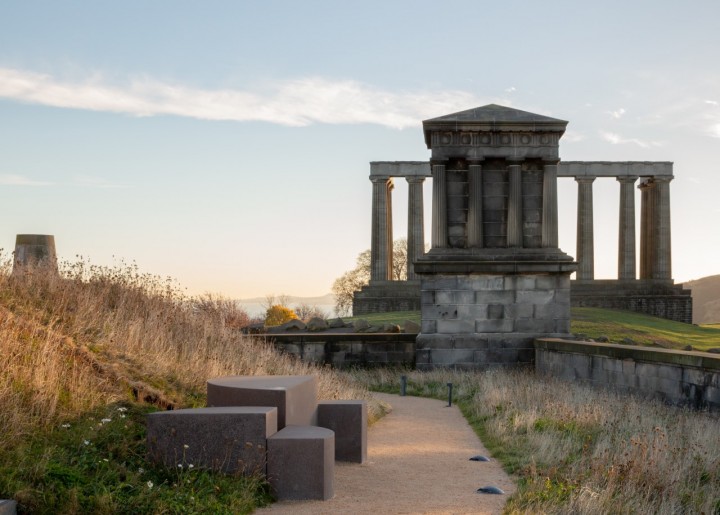Scottish Art News
Latest news
Magazine
News & Press
Publications
Scottish Art Unlocked: Kate Gray on Collective
By Kate Gray, 08.07.2020

The beginning of lockdown now seems a lifetime ago, it all took place at unprecedented speed. We had so recently delivered a major capital redevelopment project, at least it had taught us a lot about contingency planning and reacting to events beyond our control.
It felt like we were just getting used to our ‘new normal’ in our new home on Calton Hill, which just opened in late 2018. So, to shut to visitors on site was a harsh blow. Visitors are at the heart of our charitable mission to bring people together around the production and appreciation of contemporary art, but the income they generate through donations, our shop, and restaurant, makes up over half of our annual turnover.
Very suddenly, after furloughing many, our now much smaller team found themselves establishing new routines of working, Zooming, caring, hoping, worrying and planning. Regular tea breaks kept us connected on Zoom, to chat about the latest news, what was happening in our neighbourhoods, and what culture was being produced and distributed in new ways. We knew it was not an option for us to simply go dark during this time.
We all agreed it was important to acknowledge this unique moment of upheaval and change. And to continue our commitment to audiences and practitioners by creating opportunities to share new work and ideas, engaging with the complexities of this unprecedented moment. Now more than ever, it seemed important that we work directly with both artists and the communities around us. We began testing ways we could respond to this situation, working together to model tools and enact the changes that might be needed both now and in the future. To understand this moment not just as a challenge we needed to recover from (although much work has been done on stabilising the business) but an opportunity for renewal.
Conversations began with artists we already had commissioning relationships in place with about how new work might be adapted, even informed by, current conditions, while always aware of their needs and challenges in production. Highlights have been learning that online working allows for a more international context and also eliminates barriers for some communities. For example, ’Not going back to normal’, a manifesto by and for disabled artists working in Scotland and our project with and for Young Carers. It has been inspiring to learn from supporting these groups in very challenging times with many repercussions.
It is true that, after many years of decreasing funding, the entire arts sector now faces an existential threat. We can only thrive in the next five years through collaboration, mutual support, and leadership. There are no festivals this year in a festival city with no tourists. This is an opportunity to demonstrate our civic value and purpose. We are developing our relationships with local communities and international interest groups. Through taking forward positive lessons from this period we will contribute to renewal at Collective and within the city we call home.
We look forward to welcoming visitors again on site through opening in a phased way and continuing online programmes, we want to be a resource for the city and to meet the needs of citizens as they look for places to exercise, reflect, and find perspective. This is a role our sector has always played, but perhaps we now have a chance to re-affirm and demonstrate that value in reimagined ways.
Visit Collective’s website to stay up-to-date with their latest programme and for info on their partial re-opening on 9th July. To read more from art leaders across Scotland speaking out for the first time on the impact of Covid-19, visit SCAN.
This article is part of a series from the Fleming Collection in discussion with the Scottish art scene to find out how the Covid-19 pandemic and subsequent lockdown has impacted programmes and practices, and how it might reshape the art scene in the future. For more, read Tina Fiske on CAMPLE LINE.




